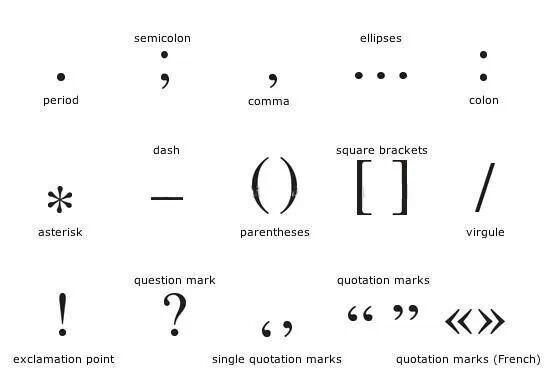When semicolons went silent and em dashes took over like unpaid interns
Once upon a time—back when writers still wrestled with sentences and not prompts—punctuation had personality. The semicolon flirted with grammar; the colon asserted dominance; the em dash provided flair without fanfare. But that was before the bots came for our commas.
Now, in the age of Generative AI, punctuation isn’t a stylistic choice. It’s a statistical prediction. A safe bet. A beige cardigan of a pause. And it’s killing our writing style faster than you can say “optimise for readability.”
Welcome to the punctuation apocalypse.

Gone but not forgotten: a visual eulogy for punctuation marks slowly being ghosted by generative AI. From the poetic pause of the semicolon to the quiet elegance of parentheses—each mark once carried intention. Now, they’re just suspiciously absent in AI-generated prose.
The Em Dash—Now in Bulk Packaging
Once beloved by Emily Dickinson, beloved again by Sally Rooney, the em dash was punctuation’s version of an espresso shot: brief, bold, and not for everyone. It connected, disrupted, added mood.
Then came ChatGPT.
Now, the em dash has become the mullet of punctuation—everywhere, misused, and oddly confident about it.
Blame the bots. As Ant Melder observed in his battle cry of a piece, the em dash has become AI’s calling card—so widely overused that Gen Z sleuths now refer to it as the “ChatGPT hyphen”1. The same mark once used to thread human thought is now a red flag that a robot has had its way with your prose.
According to a rather damning analysis by Stryng (and really, Stryng sounds like a startup created solely to shame AI writing), AI’s obsession with the em dash has bulldozed the variety of punctuation in written language. We’re left with monotone, mid-sentence mayhem.
Why? Because it’s convenient. Easy. Vaguely dramatic. And algorithms, much like corporate middle managers, love things that are efficient but dead inside.
The Curious Case of the Missing Semicolon
Let us now take a moment of silence for the semicolon—that elegant bridge between thoughts, the thinking person’s punctuation. A symbol of restraint in a world gone mad with ellipses.
AI doesn’t know what to do with semicolons. So, it simply… doesn’t.
You won’t find it in machine-generated copy. It’s too complicated. Too expressive. Too human. It requires context. Judgment. A sense of rhythm. All things an LLM mimics but never truly understands.
Grammarly and Quillbot still offer tutorials on how to use them—but it’s like teaching a toaster to appreciate Chopin. AI simply can’t hear the music.
Colon? Parentheses? Exclamation Mark? Sorry, Wrong Century.
Beyond the em dash, AI is leading a mass extinction of our favorite punctuation pals.
- Colons are disappearing. Once the opening act for a brilliant point, now replaced with safer line breaks.
- Parentheses have been ghosted. Too much nuance. Not enough click-through.
- Exclamation marks survive only in Gen Z Instagram captions—and even there, they feel like try-hards.
- Ellipses… have become a liability. Too slow. Too vague. Too emotional.
And commas? Well, AI still uses them—but often like a toddler uses glitter. Liberally, inexplicably, and with zero awareness of the mess left behind2.
The Rise of AI’s Beige Voice
It’s not just the punctuation. AI has a tone problem.
As Grammarly and LinkedIn thinkers have noted, AI content sounds like it was written by a slightly-too-eager HR intern who’s just discovered thesaurus.com. Predictable structure. Repetitive phrasing. Transitions so smooth they might as well be corporate apology emails.
You’ve seen it: “At its core,” “delve into,” “unlock the power of…” The voice is polished, professional, and eerily personality-free. The writing equivalent of decaf.
The problem isn’t that AI is getting worse—it’s that we’re letting it become our baseline. We’re designing our decks, websites, and newsletters to sound like it, so no one can tell the difference.
That’s not innovation. That’s resignation.
How Humans Are Fighting Back—With Sass and Semicolons
Fortunately, there is hope. A silent resistance is building.
Reclamation by Punctuation
Writers are staging a punctuation uprising. Semicolons are being intentionally sprinkled into copy to flag “this was written by someone with a pulse.” Brackets are making a comeback. Commas are being lovingly placed—one after another—with the care of a sushi chef in Kyoto.
Hypervigilant Editing
Editors have become the new AI detectors, sniffing out em dashes like airport security checks for banned items. If your article has five or more? You’re getting flagged.
Analog Drafting
Some writers are going full analog—drafting by hand, typing on vintage typewriters, or channeling their inner Joan Didion to “write just to see what they’re thinking.” It’s slower. More laborious. But deeply, wonderfully human.
So, What Now?
AI is here to stay, yes. It’s useful. Helpful. Occasionally hilarious. It will write your blog post, your meta description, your 1,000-word explainer on productivity hacks at 3 AM while you eat Pringles in your pajamas.
But let’s not hand it our semicolons.
Let’s keep our voice, our quirks, our uneven metaphors, and the glorious unpredictability of punctuation that doesn’t quite follow the rules.
And sure—maybe these subtleties of English grammar seem trivial to those who code in logic and execute in binaries. To engineers and data scientists, a missing semicolon is a syntax error; an overused em dash is a quirk, not a crisis.
But to lovers of literature, to those who hear music in meter, who have cried over sentences and swooned at a well-placed comma—this erosion of style isn’t efficiency. It’s loss.
It’s the flattening of the very texture that makes writing art—not output.
Let AI do your laundry; don’t let it write your love letter.
